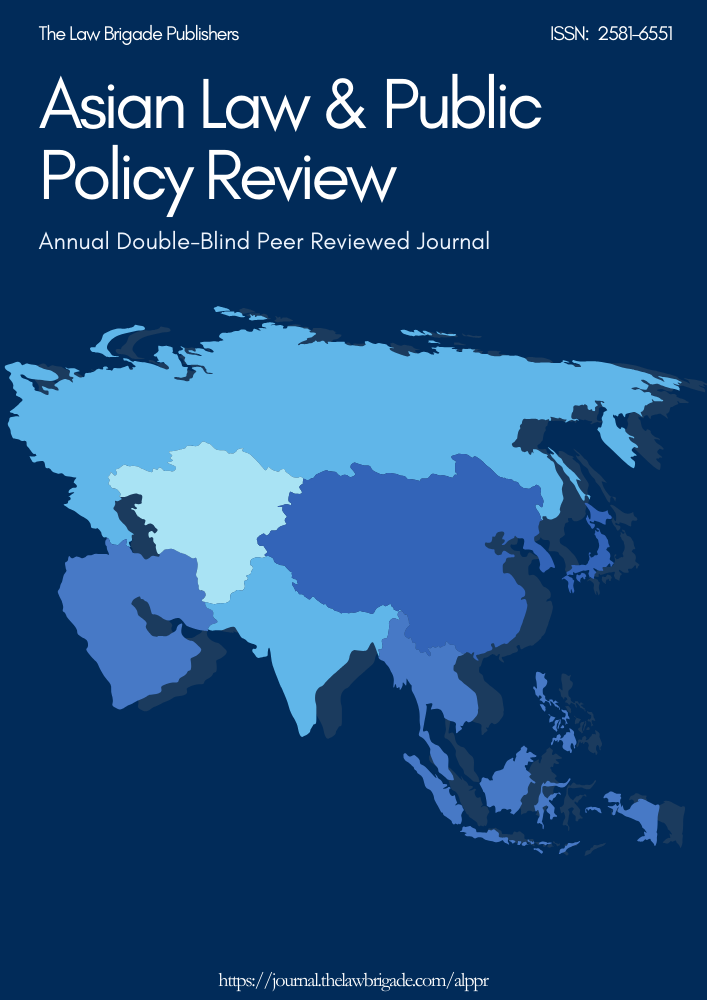Understanding Contemporary Maritime Piracy And Maritime Security: Political, Legal And Economic Implications
Keywords:
Maritime, Legal Challenges, International Politics, EconomyAbstract
While many people believe piracy to be something daring and magical, as depicted through Hollywood movies, the reality is that piracy is a real and ever-growing threat to seafarers. Ships of all trade, military or civilian, are at the risk of attack at any given moment, and pirates are becoming more and more ruthless in their actions. Piracy affects its victims in many ways, including emotionally and physically. One of the most important and least understood impacts of piracy is its financial cost. Piracy is considered a critical maritime security threat in the world. In ancient times, the main drivers of piracy were raiding for plunder and capture of slaves; however, in modern times, developments in politics, economics and even military technology have drastically altered the universal crime of piracy. There are a variety of motives behind modern day piracy including economic gains from receiving ransoms from governments or shipping companies, political and even terrorist reasons. However, it cannot be denied that piratical attacks persist and continue. This paper will examine the adequacy of legal frameworks at both the international and regional levels in order to address the current legal measures for combating piracy. Furthermore, it will discuss current challenges in the implementation of anti-piracy measures at the international and regional levels.
Downloads
References
Robyn Hunter, “How Do you pay for Pirate’s ransom?”, BBC News, 3 Dec 2008.
Panos Koutrakos, Achilles Skordas, The Law and Practice of Piracy at Sea: European and
International Perspectives, Hart Publishing, 2014
Kirkpatrick, Jennifer, “Blackbeard: Pirate Terror at Sea”, National Geographic World,
November 1996, pp.6-10.
Rubin, Alfred P., The Law of Piracy, University Press of the Pacific, Hawaii, Honolulu, 2006,
Piracy off the Horn of Africa,” Congressional Research Service, 28th September, 2009, p.7.
Young J. Adam, “Contemporary Maritime Piracy in Southeast Asia: History, Causes and
Remedies”, Institute of Southeast Asian Studies, Singapore, 2007, p. 2,
HaberkornhalmJ.A.,White Paper on Managing the risks of Maritime Piracy, Ozonelink Corp.,
2004.
International Maritime Bureau, 2007, p. 9.
NUMAST Telegraph, Vol. 25, No. 7, Piracy Supplement, July 1992, p. i.
Martin Murphy, “Contemporary Piracy and Maritime Terrorism: The Threat to International
Security”, International Institute for Strategic Studies, Adelphi Paper 338, London, 2007, p.
19.
International Maritime Bureau, Piracy and Armed Robbery Against Ships: Special Report,
International Chamber of Commerce, London, 1997, pp. 33–39.
Robert Beckman, Carl Grundy-Warr, and Vivian Forbes, “Acts of Piracy in the Malacca
Straits,” Maritime Briefing, Vol. 1, No. 4, 1994.
p.6
Thomson, Janice, Mercenaries, Pirates & Sovereigns, Princeton University Press, Princeton,
1994, p.102
Ndumbe J. Anyu and Samuel Moki, “Africa: The Piracy Hot Spot and Its Implications for
Global Security,” Mediterranean Quarterly, Summer 2009, p.107.
Christopher P. Cavas, “To Fight Pirates, Follow the Money: U.S. Admiral,” Defense News.
Accessed 10th April, 2010.
Xan Rice, Lee Glendinning, “Pirates anchor hijacked supertanker off Somalia coast,”
Guardian.co.uk, November 2008, p.1.
Catherine Zara Raymond, “Piracy and Armed Robbery in the Malacca Strait: A Problem
Solved?”,Naval War College Review, Vol. 62, No. 3, Summer 2009, p. 31.
Downloads
Published
Issue
Section
License

This work is licensed under a Creative Commons Attribution-NonCommercial-ShareAlike 4.0 International License.
License Terms
Ownership and Licensing:
Authors of research papers submitted to any journal published by The Law Brigade Publishers retain the copyright of their work while granting the journal specific rights. Authors maintain ownership of the copyright and grant the journal the right of first publication. Simultaneously, authors agree to license their research papers under the Creative Commons Attribution-ShareAlike 4.0 International (CC BY-SA 4.0) License.
License Permissions:
Under the CC BY-SA 4.0 License, others are permitted to share and adapt the work, even for commercial purposes, provided that appropriate attribution is given to the authors, and acknowledgment is made of the initial publication by The Law Brigade Publishers. This license encourages the broad dissemination and reuse of research papers while ensuring that the original work is properly credited.
Additional Distribution Arrangements:
Authors are free to enter into separate, non-exclusive contractual arrangements for distributing the published version of the work (e.g., posting it to institutional repositories or publishing it in books), provided that the original publication by The Law Brigade Publishers is acknowledged.
Online Posting:
Authors are encouraged to share their work online (e.g., in institutional repositories or on personal websites) both prior to submission and after publication. This practice can facilitate productive exchanges and increase the visibility and citation of the work.
Responsibility and Liability:
Authors are responsible for ensuring that their submitted research papers do not infringe on the copyright, privacy, or other rights of third parties. The Law Brigade Publishers disclaims any liability for any copyright infringement or violation of third-party rights within the submitted research papers.


